|
 |
On Wednesday 5th October 2016 at
10.00 AM - almost 72 years to the
day on which they had been Killed in
Action - two soldiers of The
Wiltshire Regiment were re-interred
in Arnhem-Oosterbeek Commonwealth
War Graves Commission War Cemetery.
This agency attended the ceremony.
The burial party was provided by 5th
Battalion The Rifles from Bulford
Camp in Wiltshire. The collective
field grave of these two Wiltshire
men was discovered during explosive
ordnance clearance in February 2013,
near De Laar farm in South Arnhem,
well known for its fierce Battle for
the Level Crossing (129th Brigade,
43rd Wessex Division). During this
battle in the aftermath of Operation
Market-Garden, the Wiltshires lost
over ninety officers and men. This
marshy area between Nijmegen and
Arnhem was referred to by the Allied
as “The Island”.
The Recovery and Identification Unit
(RIU) of the Royal Netherlands Army
were summoned to the site and after
a careful exhumation transferred
both remains to their laboratory in
Soesterberg. Found with the remains
were some artefacts, including a
Wiltshire Regiment cap badge and a
Warwickshire Regiment button.
Following research of the Wiltshire
Regiment 4th Battalion Roll, there
were 7 possible candidates, 5 of
whom were ruled out by their age,
height or dental records.
After extensive research RIU were
able to identify both remains as
belonging to Lance Corporal
Donald S. Noble from Leeds (KIA
4th October1944) and Private
Harold J. Lewis from Hertford
(KIA 3rd October 1944).
This day both soldiers were
re-interred with full military
honors.
Neither soldier had any family
attending the service.
The ceremony was led by Father
Phillip Smith. Music was provided by
the Dutch Army’s Fanfare Band of the
Mounted Regiments.
|
|
(click to enlarge)
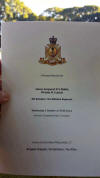




 



 |
Ceremony at "De Laar" Farm
monument to the Wiltshire Regiment
After the funeral ceremony had
ended, at 14:00 on 5OCT2016 a wreath
laying ceremony has been held at the
Wiltshire Regiment monument near the
location of the "De Laar" farm
building on Marasingel in the center
of the new residential area of
Schuytgraaf in the municipality of
Arnhem; formerly known as Driel-West.
This agency did not attend this
ceremony but on 23OCT2016 we found
the floral decorations at the
monument as intact as they must have
been on the day they'd been laid.
|
|
(click to enlarge)
 |
|
(click to enlarge)


 |
Battle of the Level Crossing
From 1LT Jonker of the RIU we
learned that Lance Corporal
Donald S. Noble and Private
Harold J. Lewis had been Killed In
Action near the level crossing of
the Nijmegen-Arnhem railway line and
the road East of the "De Laar" farm,
at the time known as Zuidelijke
Laarsche Pijp.
This is the diagram he provided this
agency: |
|
(click to enlarge)
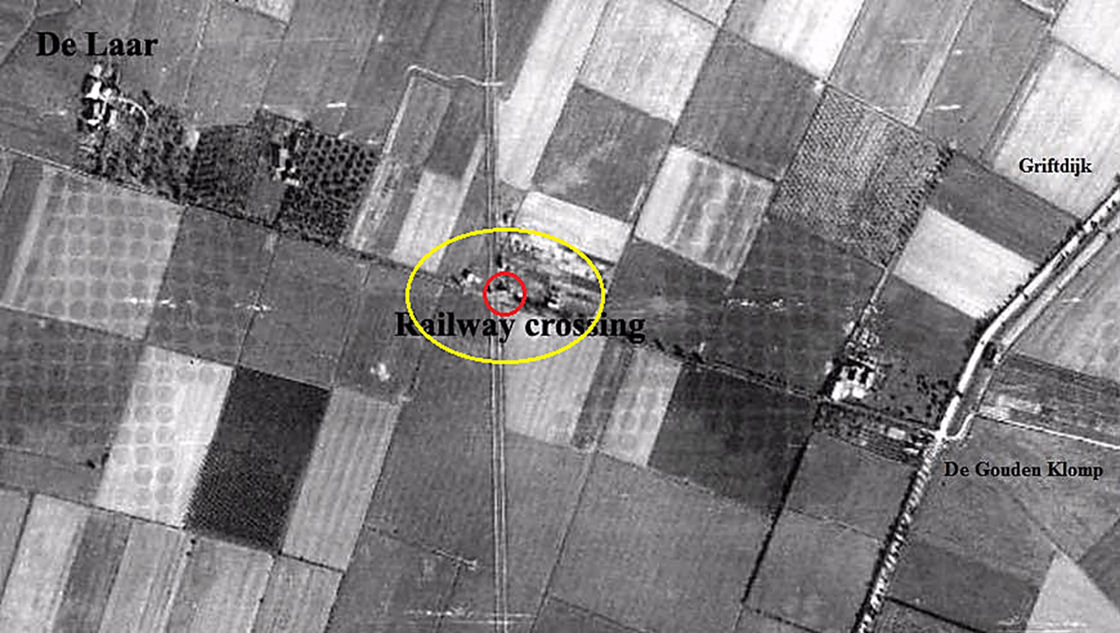 |
|
On the map used by the Allied troops
at that time, the location of the
railway crossing is indicated with a
red circle: |
|
(click to enlarge)
 |
|
1LT Jonker went on to explain: "The
railway crossing was of vital
importance to both sides as this was
the spot where the railway line
touched ground level south of where
the railway starts ascending on an
embankment towards the Lower Rhine
river dyke further north in the
direction of Arnhem. It was the
northernmost location where the
(German) "Sperrverband"
(blocking force) Harzer - and the
116th Panzer Divison in a later
stage of the battle - was able to
enter the British bridgehead west of
the railway line with armored
fighting vehicles, tanks, et
cetera." |
After the battle, the crossing and
the battle damaged signal man's
house looked like this:
|
|
(click to enlarge) |
.jpg) |
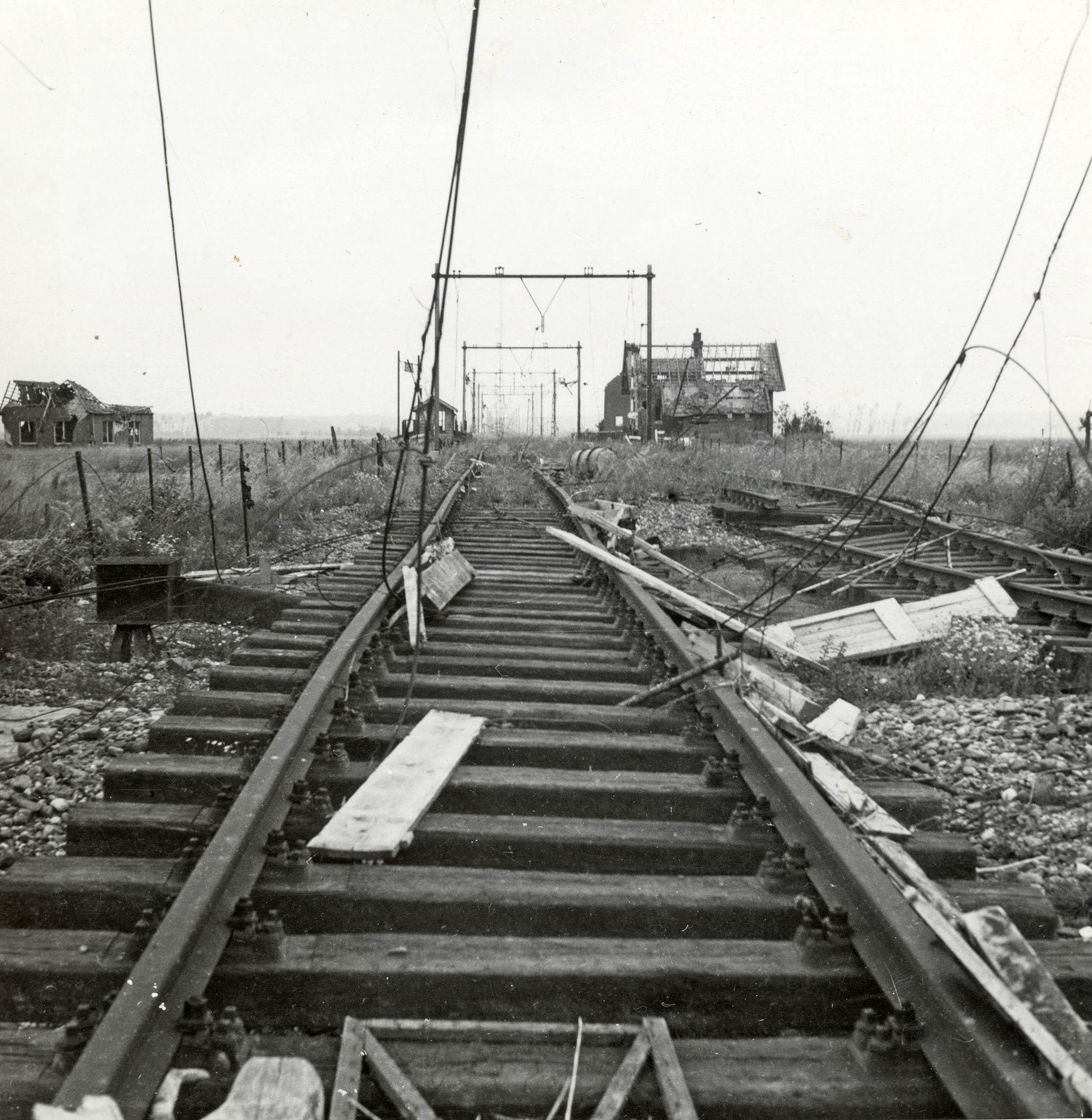 |
 |
|
Images from the
Utrechts Archief,
Catalog No's.: 157717 (damaged
Signal Post No. 3), 115718 (facing
north) & 115719 (facing south). |
Today, the location of the crossing
has changed drastically. At GPS
location 51°56'38.9"N 5°51'10.2"E on
a street named De Laar, a modern
narrow tunnel allows pedestrians and
bicycle riders to pass under the
railway line.
We took these comparison photos on
the same spot where the railway line
is crossed, making sure to stay safe
and not trespassing: |
|
(click to enlarge) |
 |
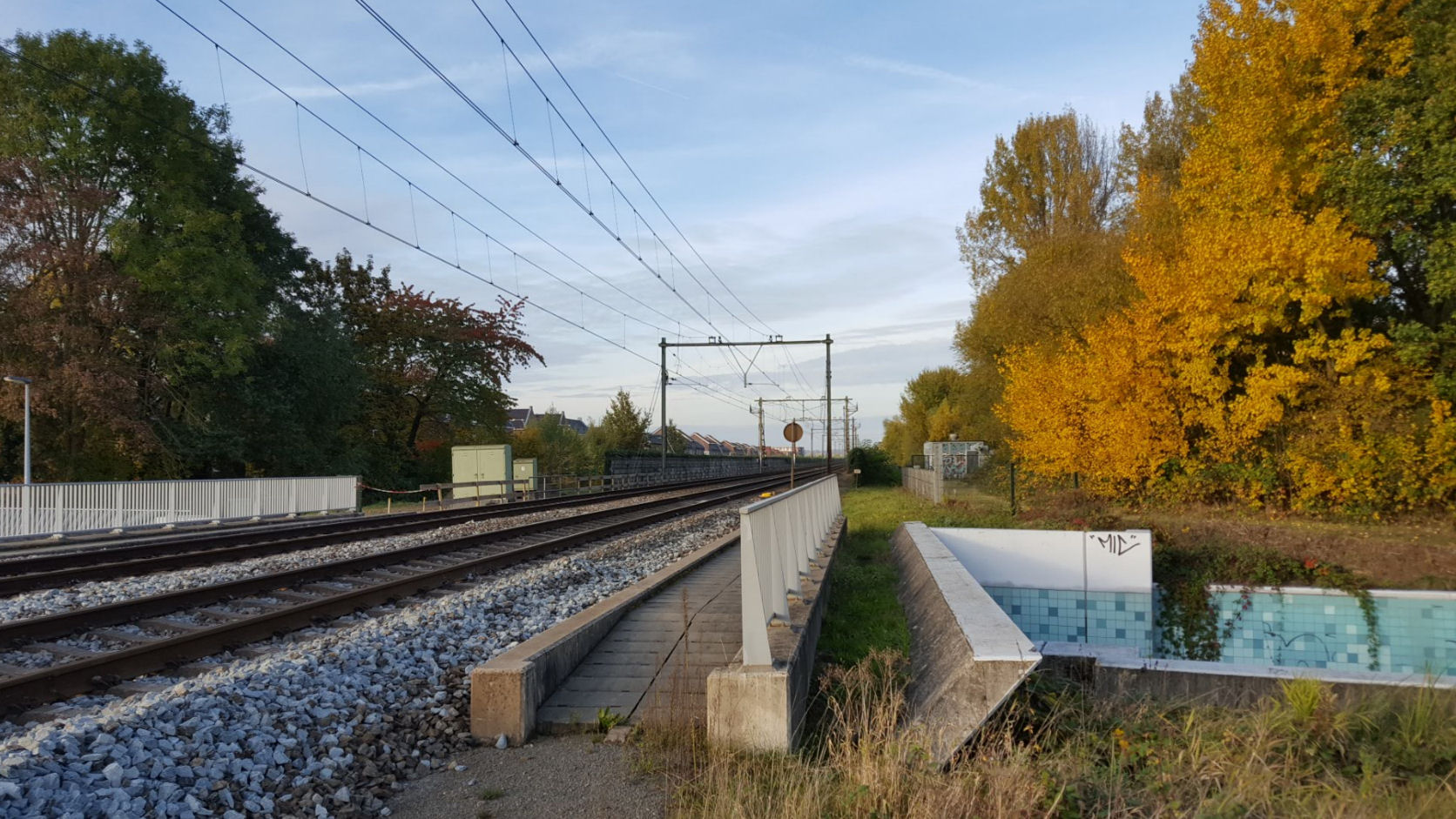 |
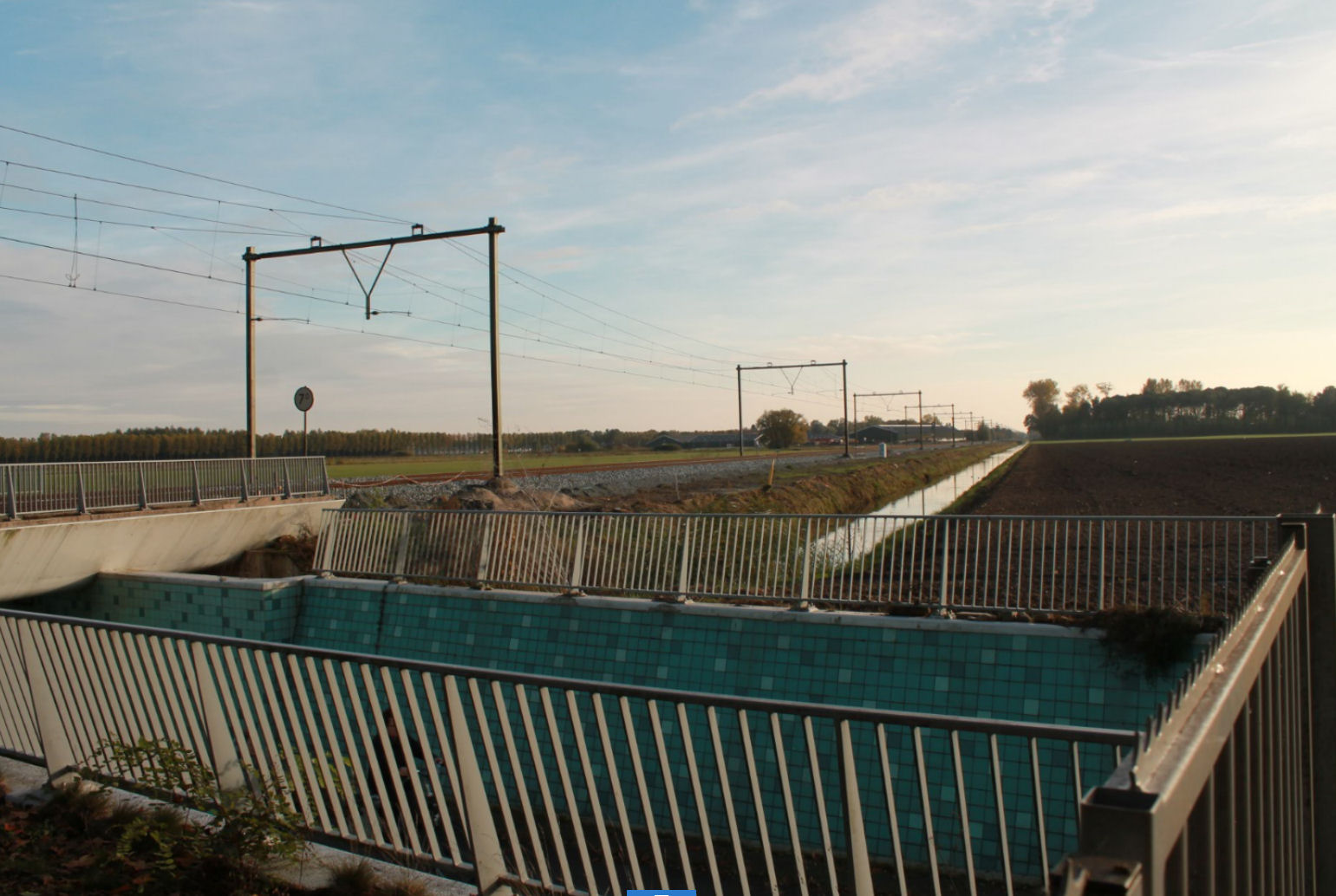 |
|
Note that even today
the overhead electrical power
portals for the trains are of the
same design as in World War Two,
even down to the isolators and
V-shaped cable clasps. |
|
 |
|
Back to Commemoration Page |













